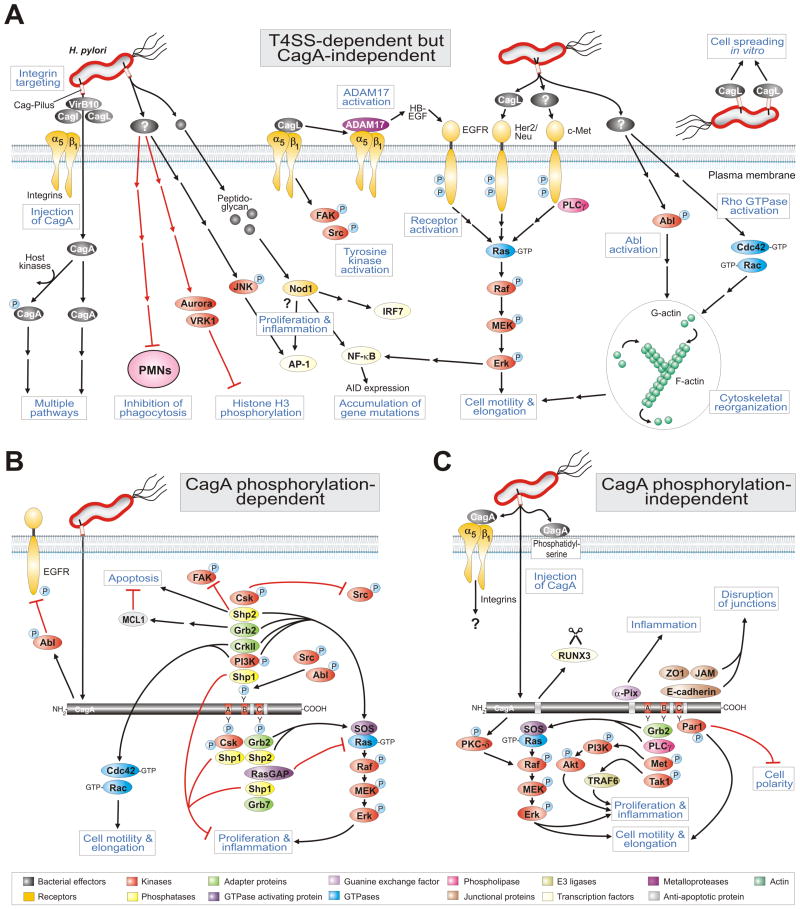Figure 3.
Model for the role of H. pylori T4SS in host cell signaling processes which may effect pathogenesis. (A) The H. pylori T4SS pili are induced upon contact with host cells and can inject effector molecules such as the CagA protein and peptidoglycan in a manner dependent on integrin β1. Injected CagA can then induce cascades as depicted in the panels below. Panel A highlights a multitude of known T4SS-dependent but CagA-independent pathways involved in the activation of receptor and non-receptor tyrosine kinases, pro-inflammatory signalling, Rho GTPase activation, scattering and motility of gastric epithelial cells as well as suppression of histone phosphorylation and H. pylori phagocytosis by immune cells. Two particular T4SS factors have been reported to be involved in some but not all of these responses. The known signaling functions for injected peptidoglycan as well as pilus-exposed or recombinant CagL are shown. For numerous other pathways the actual T4SS factor is yet unknown as also indicated. (B) CagA phosphorylation-dependent and (C) phosphorylation-independent signal transduction events. CagA is injected into the host cell membrane of infected gastric epithelial cells which also requires phosphatidylserine. The tyrosine kinases Src and Abl phosphorylate injected CagA. CagA can then modulate various signaling cascades associated with cell polarity, cell proliferation, actin-cytoskeletal rearrangements, cell elongation, disruption of tight and adherens junctions, pro-inflammatory responses and suppression of apoptosis, as depicted. Black arrows indicate activated sigalling pathways and red arrows correspond to inactivated cascades. Panels B and C were updated from Backert et al. [26] with kind permission from WILEY. For specific abbreviations and terms used in this figure, please see text and glossary in the Supplementary Material (Doc. S1).

